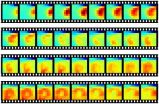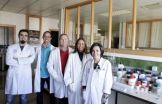(Press-News.org) As shown in a study carried out by researchers at 13 research centres in Asturias, Gipuzkoa, Sabadell and Valencia, over half of non-smoking pregnant women, 55%, are passive smokers. These women are under the effect of tobacco smoke to a considerable extent because a member of the household, their partner in particular, smokes at home. The result of the study has been published in the journal Science of the Total Environment.
Within the INMA project that studies childhood and the environment, research has been carried out into the extent to which non-smoking pregnant women from Asturias, Gipuzkoa, Sabadell and Valencia are exposed to tobacco smoke. To find out about tobacco exposure, researchers based themselves on urine samples collected during the medical check-up in the third trimester of pregnancy, and on the responses the women gave to a set of questions. They studied 1,783 women after rejecting another 480 who had displayed signs of being smokers according to their urine samples and the results of the surveys.
"Tobacco smoke has been found to have a detrimental effect on the foetus when pregnant women are under the effect of it," said Juanjo Aurrekoetxea; he is a researcher at the UPV/EHU's department of Preventative Medicine and Public Health as well as a participant in the research. Passive tobacco increases the risk of miscarriage. Nevertheless, the problem mainly affects the child's development;they tend to be smaller at birth and have lower cognitive development. In addition, and although to a lesser extent, these infants have a greater sudden death rate, and a greater risk of suffering cancer and respiratory disease in childhood as well. "
Aware of the damage caused by tobacco smoke on the foetus, and as a result of the pressures brought to bear by people close to them and doctors, 10% of women smokers give up smoking when they become pregnant, although 22% of pregnant women continue smoking. If the 55% of non-smoking passive smokers are added to that, Aurrekoetxea stresses that "the message is not getting through. Health education is crucial for protecting women, and foetuses, in particular."
Cotinine, the tobacco marker
In the set of questions that the women in the study responded to, they were asked about the lifestyles that could be linked to tobacco, for example, in what situations they found themselves under the effect of tobacco smoke. To supplement the information gathered from these questions, the researchers measured the cotinine in the urine samples. Nicotine, one of the main chemical components of tobacco smoke, is metabolised immediately in the liver as soon as it enters the body; the compound, cotinine, which is produced from it,stays in the body for 15 to 20 hours. "Nicotine is not toxic for the body; it creates an addiction, but it is not particularly harmful. However, as it appears in high doses in tobacco, it is usually used as a marker to monitor tobacco consumption. In fact, when cotinine appears in the blood or urine, it indicates that there has been significant consumption of tobacco or passive exposure to it," explained Aurrekoetxea.
55% of the non-smoking women admitted they had been under the effect of tobacco smoke:38. 5% declared that leisure activities were responsible, above all being in bars and restaurants, and 24. 7% said that it had been a member of the household who was a smoker.
Even though the exposure caused by members of the household was not the most common one, the cotinine level analysed in the urine revealed that the home was the main source of exposure, because the women who suffered it had the highest concentration of cotinine. "The greatest exposure happens when the woman's partner smokes at home," stressed Aurrekoetxea. When another person who was not their partner smoked at home, the level of cotinine detected in the women was the second highest. Therefore, as Aurrekoetxea made it clear, "the home is the main source of exposure to tobacco smoke. People everywhere are saying tobacco is bad and that passive exposure is also bad, but people still fail to take the necessary measures not to smoke, or not to force pregnant women to breathe tobacco smoke either. "
As the study was carried out between 2004 and 2008, they were able to measure the effect of the law of 2006 banning smoking. "Specifically, the level of cotinine in the pregnant women analysed in the study fell 16%. Well,it's something, and shows that measures of this type are effective," pointed out Aurrekoetxea.
Women from Asturias, Gipuzkoa, Sabadell and Valencia were studied, and even though the data from the four regions were processed together to produce the results, some differences and peculiarities were detected between one region and another. In the case of pregnant women in Gipuzkoa, exposure on the whole was found to be lower; in other words,there are fewer women passive smokers. However, the highest average levels of cotinine were measured among the women who had been exposed. "That took us by surprise," said Aurrekoetxea. We haven't looked into the reason for that, but we believe that it has to do withour region's climate and lifestyles."
INFORMATION: END
Half of pregnant women are passive smokers, due above all to their partners
2014-03-05
ELSE PRESS RELEASES FROM THIS DATE:
Sulphur haunts the ghost wreck
2014-03-05
Scientists from the same team have previously reported large amounts of sulphur and iron accumulation in the warship Vasa. In that study, the scientists found an outbreak of acidity and sulphate salts on the surface of the hull and other wooden objects.
'This is the result of biological and chemical processes that occur naturally in low-oxygen waters and in sediments,' says Yvonne Fors from the Department of Conservation at the University of Gothenburg and one of the scientists behind the article.
However, even if sulphur and iron accumulation is commonly occurring ...
Plumes in the sleeping avian brain
2014-03-05
This news release is available in German.
When we drift into deep slow-wave sleep (SWS), waves of neuronal activity wash across our neocortex. Birds also engage in SWS, but they lack this particular brain structure. Researchers from the Max Planck Institute for Ornithology in Seewiesen, Germany together with colleagues from the Netherlands and Australia have gained deeper insight into the sleeping avian brain. They found complex 3D plumes of brain activity propagating through the brain that clearly differed from the two-dimensional activity found in mammals. These ...
New technique allows frequent water quality monitoring for suite of pollutants
2014-03-05
Researchers from North Carolina State University have developed a new technique that uses existing technology to allow researchers and natural resource managers to collect significantly more information on water quality to better inform policy decisions.
"Right now, incomplete or infrequent water quality data can give people an inaccurate picture of what's happening – and making decisions based on inaccurate data can be risky," says Dr. François Birgand, an assistant professor of biological and agricultural engineering at NC State and co-author of a paper describing the ...
Copied from nature: Detecting software errors via genetic algorithms
2014-03-05
This news release is available in German.
According to a current study from the University of Cambridge, software developers are spending about the half of their time on detecting errors and resolving them. Projected onto the global software industry, according to the study, this would amount to a bill of about 312 billion US dollars every year. "Of course, automated testing is cheaper", explains Andreas Zeller, professor of Software Engineering at Saarland University, as you could run a program a thousand times without incurring any charges. "But where do these ...
New findings on neurogenesis in the spinal cord
2014-03-05
Research from Karolinska Institutet in Sweden suggests that the expression of the so called MYC gene is important and necessary for neurogenesis in the spinal cord. The findings are being published in the journal EMBO Reports.
The MYC gene encodes the protein with the same name, and has an important role in many cellular processes such as proliferation, metabolism, cell death and the potential of differentiation from immature stem cell s to different types of specialized cells . Importantly it is also one of the most frequently activated genes in human cancer.
Previously ...
Barbie could dampen a young girl's career dreams
2014-03-05
Although the marketing slogan suggests that Barbie can "Be Anything," girls who play with this extremely popular doll see fewer career options available to themselves compared to boys. So say Aurora Sherman of Oregon State University and Eileen Zurbriggen of the University of California, Santa Cruz, who conducted one of the first experiments on how playing with fashion dolls influences girls' perceptions about their future occupational options. The findings, which the psychologists describe as "sobering," are published in Springer's journal Sex Roles.
Sherman and Zurbriggen ...
Technique patented that opens the door to the development of new drugs against osteoporosis
2014-03-05
This news release is available in Spanish.
Scientists from the University of Granada (UGR) have opened the door to the development of new drugs against osteoporosis, one of the most common chronic illnesses in the world, especially among women 65 or over.
The researchers, from the University of Granada's Department of Physio-Chemistry, have patented a new methodology that allows specialists to measure – none-invasively and in real time – the concentration of phosphate ions inside living cells. The scientific importance of measuring phosphate ions is based precisely ...
Banana plant fights off crop's invisible nemesis: Roundworms
2014-03-05
The banana variety Yangambi km5 produces toxic substances that kill the nematode Radopholus similis, a roundworm that infects the root tissue of banana plants – to the frustration of farmers worldwide. The finding bodes well for the Grande Naine, the export banana par excellence, which is very susceptible to the roundworms.
The parasitic nematode Radopholus similis is the invisible nemesis of the banana plant, says Professor Dirk De Waele (Laboratory for Tropical Crop Improvement, KU Leuven), a co-author of the study: "This roundworm infects banana crops worldwide. The ...
Patients' stories used to improve care on wards
2014-03-05
A research project led by Oxford University is showing how patient experiences can be used to improve healthcare – not through targets and surveys, but by getting doctors, nurses and patients talking together about care on the ward.
The new approach has been used in pilot projects at two UK hospital trusts – Royal Brompton & Harefield NHS Foundation Trust in London and the Royal Berkshire in Reading. Videos of patients talking about care they received at various hospitals are used to trigger a discussion between NHS staff, managers, patients and family members about the ...
Program to move families out of high-poverty neighborhoods has mixed results
2014-03-05
A program designed to move families out of high-poverty neighborhoods resulted in reduced rates of depression and conduct disorder among girls, but increased rates of depression, post-traumatic stress disorder (PTSD) and conduct disorder among boys, according to a study published in the March 5 issue of JAMA.
Prof. Jens Ludwig, one of the study's authors, said this was a follow-up long-term analysis of families participating in the Moving to Opportunity residential-mobility demonstration sponsored by the U.S. Department of Housing and Urban Development. Ludwig is the ...








